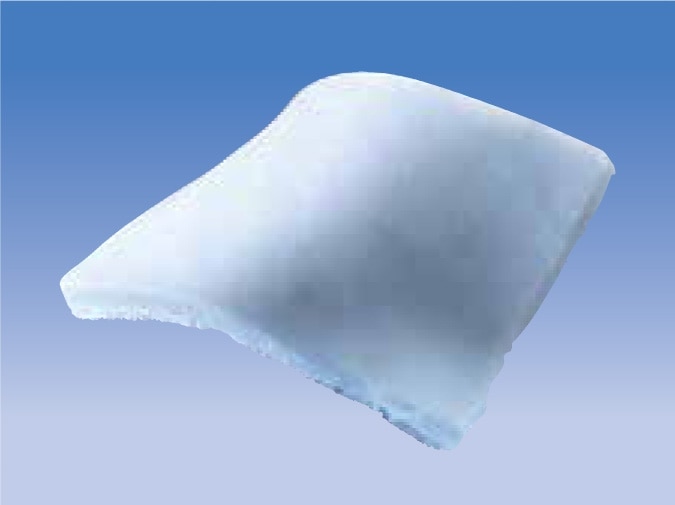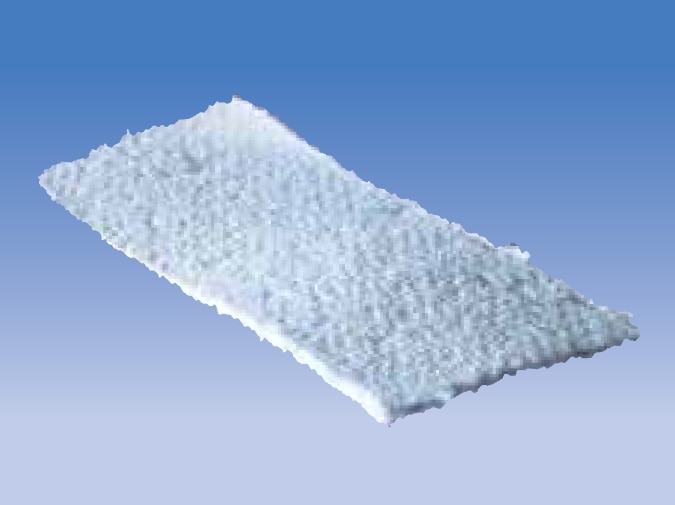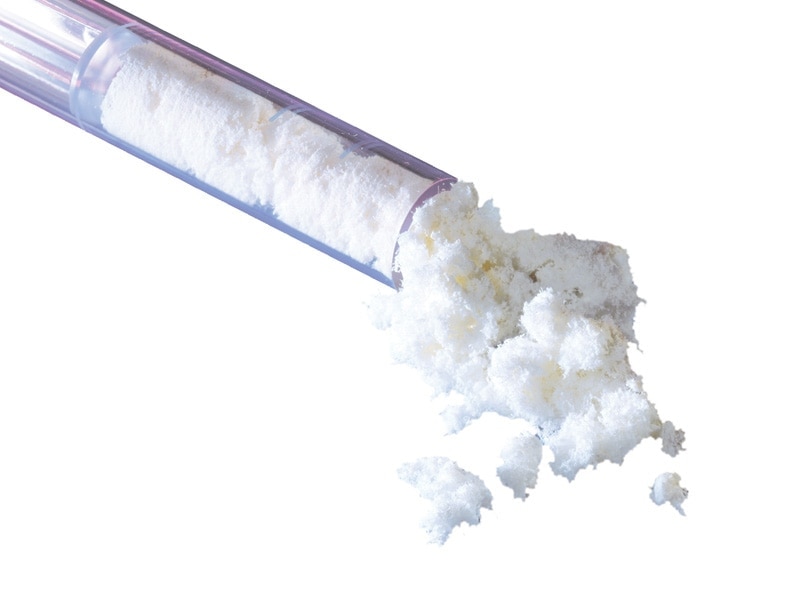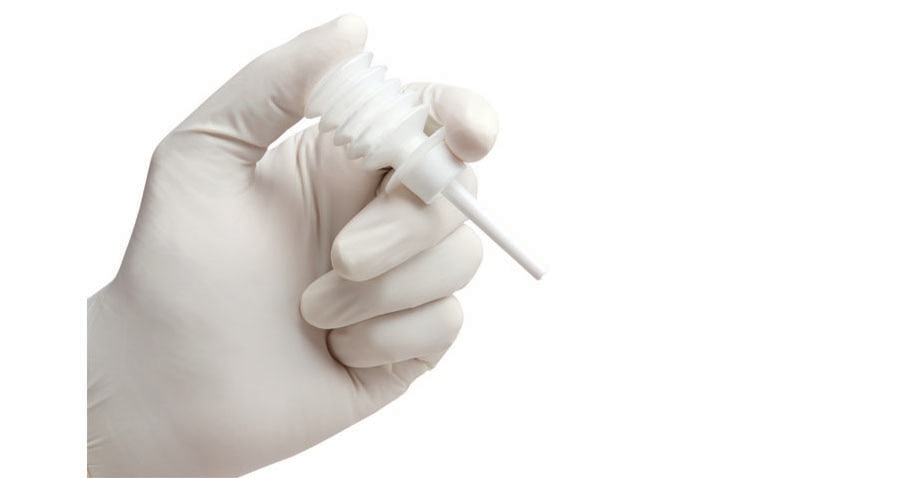1 Étude clinique Arista™ AH PMA P050038.
2 Consultez le mode d’emploi intégral pour obtenir les directives d’application détaillées.
3 Mode d’emploi d’Arista™ AH.
INDICATIONS
L’utilisation d’Arista™ AH est indiquée au cours d’interventions chirurgicales (sauf les interventions neurologiques et ophtalmiques) en tant que dispositif hémostatique d’appoint pour assister au contrôle des saignements capillaires, veineux et artériolaires en supplément de la pression, de la ligature et de tout autre moyen conventionnel si ceux-ci s’avèrent inefficaces ou non praticables.
CONTRE-INDICATIONS
N’injectez ou n’appliquez pas d’Arista™ AH dans les vaisseaux sanguins; sa présence représente un risque d’embolie pouvant causer la mort.
AVERTISSEMENTS
L’Arista™ AH n’a pas été conçu pour se substituer à une technique chirurgicale méticuleuse ni à l’application adéquate de ligatures ou d’autres méthodes conventionnelles d’hémostase.
Une fois l’hémostase atteinte, l’excès d’Arista™ AH doit être éliminé du site d’application par irrigation et aspiration, surtout si le produit est utilisé près des foramens osseux et des zones à proximité des os, de la moelle épinière ou du nerf optique et du chiasma optique.L’Arista™ AH gonfle pour atteindre son volume maximal dès son contact avec le sang ou tout autre liquide. Tout Arista™ AH sec et blanc doit être éliminé. La possibilité d’interférence du produit avec une fonction normale ou d’apparition d’une nécrose de compression des tissus environnants due au gonflement est réduite par l’élimination de l’excès de matières sèches.
L’innocuité et l’efficacité cliniques de l’Arista™ AH n’ont pas été testées chez les enfants et les femmes enceintes. Les données montrent que les nouveau-nés jusqu’aux bébés âgés de moins de 10 mois peuvent présenter une réduction de l’activité des amylases; les taux de résorption d’Arista™ AH au sein de cette population pourraient donc excéder 48 heures.
L’utilisation d’Arista™ AH en présence d’une infection ou sur une zone corporelle contaminée doit se faire avec précaution. Une nouvelle chirurgie pourrait être nécessaire en présence de signes d’infection ou de développement d’un abcès au site d’application d’Arista™ AH afin de permettre le drainage.
L’innocuité et l’efficacité du produit dans le cadre d’interventions neurochirurgicales et ophtalmiques n’ont pas été déterminées.
L’Arista™ AH ne doit pas servir au contrôle des saignements après un accouchement ou des ménorragies.
PRÉCAUTIONS
Lorsque l’Arista™ AH est utilisé conjointement avec des circuits de récupération de sang autologue, suivez attentivement les directives données dans la section Administration du mode d’emploi concernant l’exécution d’une filtration appropriée et d’un lavage cellulaire.
L’Arista™ AH a été conçu pour être utilisé à l’état sec. Un contact préalable à l’application et à l’atteinte de l’hémostase avec une solution saline ou antibiotique entraînera une perte de potentiel hémostatique.
L’utilisation d’Arista™ AH n’est pas recommandée pour le traitement primaire des troubles de la coagulation.
Aucun essai n’a été réalisé pour vérifier l’utilisation d’Arista™ AH sur les surfaces osseuses sur lesquelles des matières prothétiques doivent être fixées avec un adhésif; une telle utilisation n’est donc pas recommandée.
L’Arista™ AH est livré stérile et ne peut pas être stérilisé à nouveau. Tout contenant d’Arista™ AH ouvert et inutilisé doit être éliminé.
N’appliquez pas d’Arista™ AH en quantités excédant 50 g chez un patient diabétique; il a été calculé qu’une quantité excédant 50 g pourrait avoir un impact sur la charge glycémique.
L’Arista™ AH ne doit pas être laissé dans le bassin rénal ni dans les uretères lors des interventions urologiques visant l’élimination des foyers potentiels de formation de calculs.
RÉACTIONS INDÉSIRABLES
Aucun des événements indésirables survenus au cours d’un essai clinique prospectif randomisé à contrôle concurrent n’a été jugé comme étant lié à l’usage de l’Arista™ AH par le comité de surveillance de la sécurité des données. Les événements indésirables les plus fréquents se sont avérés être des douleurs liées à la chirurgie, une anémie, des nausées, des valeurs d’analyses de laboratoire hors des plages normales, de l’arythmie, de la constipation, de la défaillance respiratoire et de l’hypotension. Tous ces événements ont été signalés dans une proportion supérieure à 10 % chez les patients traités avec l’Arista™ AH. Les détails des événements indésirables survenus au cours de cet essai clinique peuvent être consultés dans le mode d’emploi accompagnant le produit; ils sont également disponibles sur le site www.bd.com.
Mise en garde : La loi fédérale (des États-Unis) restreint la vente de ce dispositif par ou sur ordonnance d’un médecin agréé ou d’un praticien dûment agréé.
BD-14602







